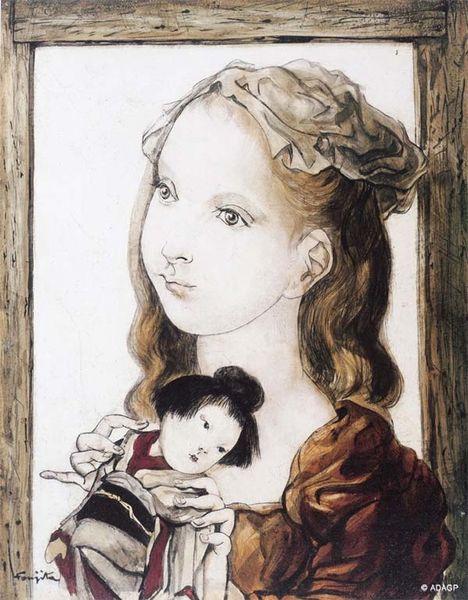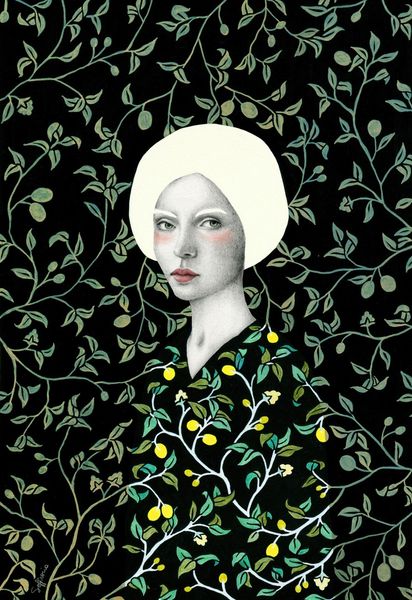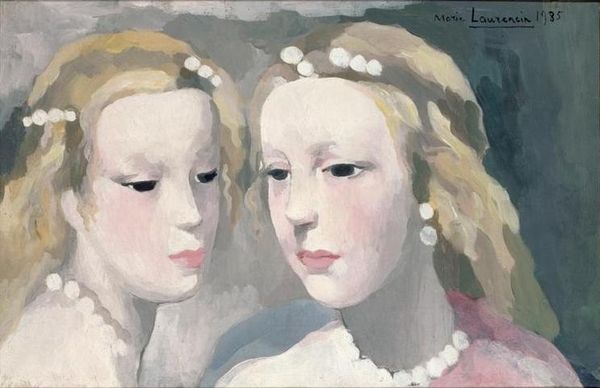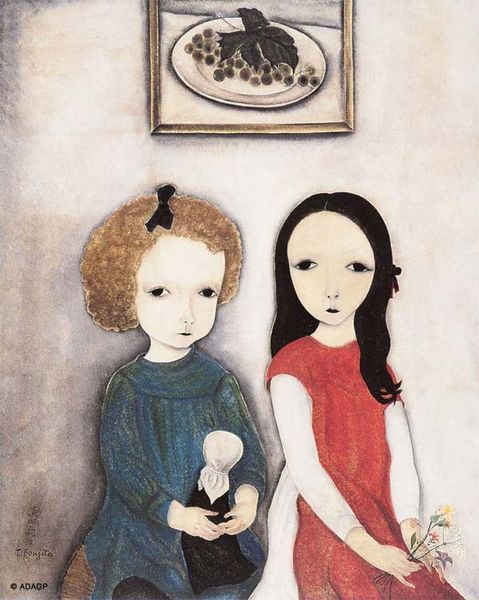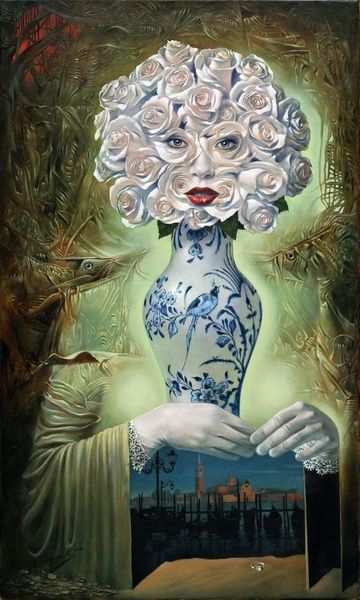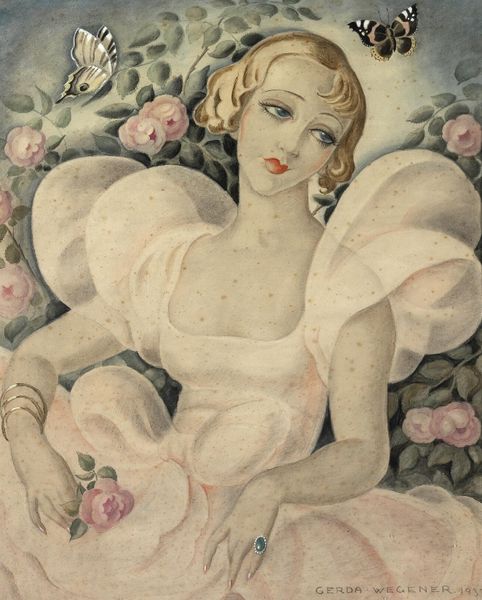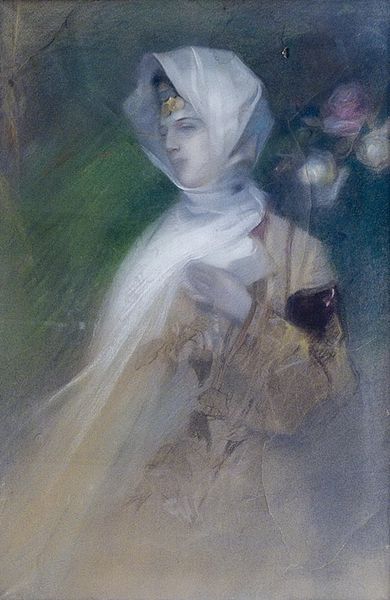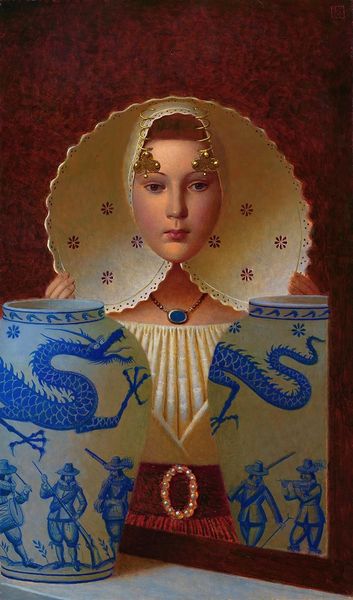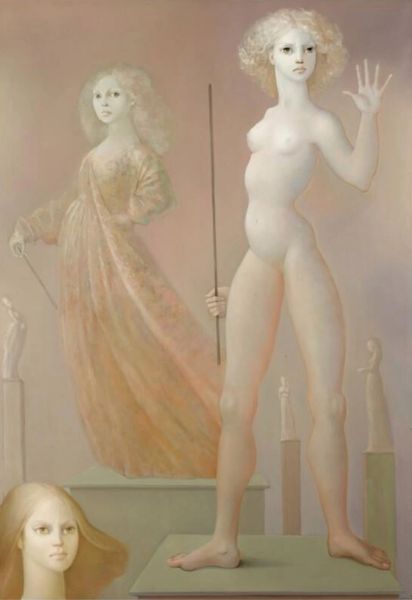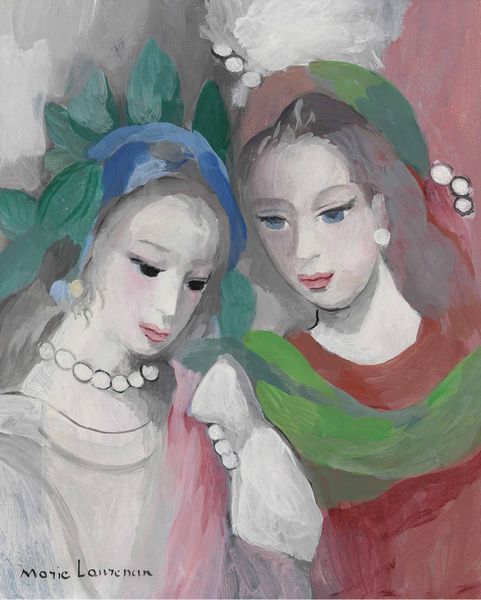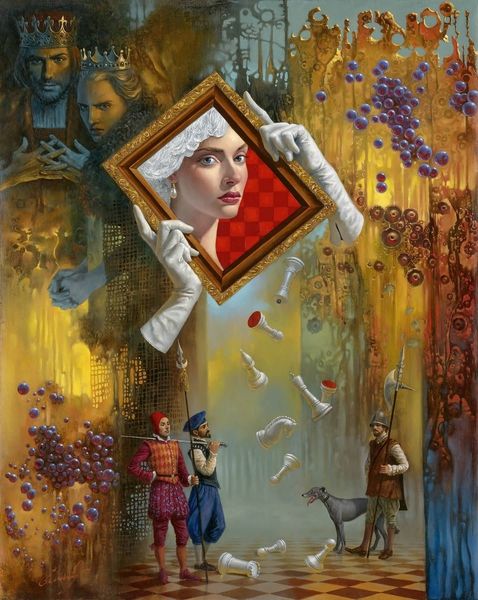
watercolor
#
portrait
#
figuration
#
watercolor
#
intimism
#
watercolour illustration
#
portrait art
Copyright: Tsuguharu Foujita,Fair Use
Curator: Here we have "Les Deux Soeurs," or "The Two Sisters," a watercolor work on paper crafted by Tsuguharu Foujita in 1964. What are your initial thoughts? Editor: There is something unsettlingly beautiful about this piece; it's hard to pin down exactly, perhaps in the ambiguous gaze of the figures or maybe its austere rendering in watercolor. The palette feels very delicate. Curator: Delicate is a good way to describe it. The watercolor medium itself, the layering and translucency, speaks to Foujita’s particular approach, does it not? He carefully built tone to delineate his forms using fluid strokes of browns, grays, reds, and blues. Note the almost porcelain skin of the women. Editor: Precisely! And the materials reinforce that theme: it is paper, water, pigment. The artist must have needed absolute control over the ratio of water to paint; any hesitation would compromise the paper and muddy the whole image. I'm thinking about the amount of patience this implies... Curator: Quite true. I appreciate how Foujita uses the architecture of the stone archway—seemingly medieval in style—as a frame, anchoring the ethereal quality of the women and those roses. Consider also, though, the careful geometry implicit in that curve, contrasting with the softer curves of the roses. Editor: Speaking of craft, the rendering of clothing and garments here seems particularly relevant to the artist's production, perhaps as a symbol of labor. And Foujita clearly understands how the draped fabric both obscures and defines the subjects’ bodies. I keep wondering, how much did the patron have to pay to be rendered so carefully, or, alternatively, how much would this dress cost back then? Curator: An interesting thought indeed. Regardless of whether that can be ascertained, what is striking is Foujita's masterful ability to invoke tenderness using only such seemingly austere forms and humble materials. Editor: I concur, the piece has certainly grown on me; looking closer at the labor inherent in creating this artwork shifts how I respond to its aesthetic impact. I hadn’t considered intimacy as the work of someone’s hands before now.
Comments
No comments
Be the first to comment and join the conversation on the ultimate creative platform.
